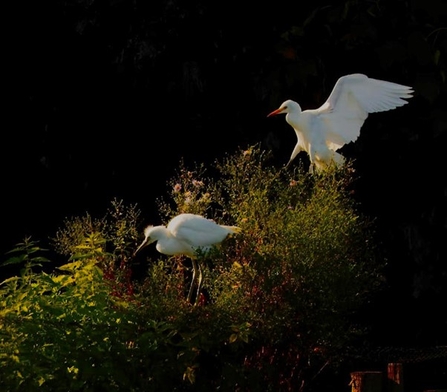
A cattle egret made another brief appearance on No 3 island pic @MK
Good numbers of wigeon dropped in this month pic @MLP

A cattle egret made another brief appearance on No 3 island pic @MK
The second ever yellow-browed warbler - four years after the first - was the highlight of September which also saw the long overdue appearance of great egrets this year. Cattle egret, tree Pipit and Black-necked Grebe were recorded as well for the second time in 2024 while a remarkable flock of 12 sandwich terns flew through the reservoirs. In all, 91 species were seen across the month with the year list now standing at 138, the same as last year and nine ahead of 2022.
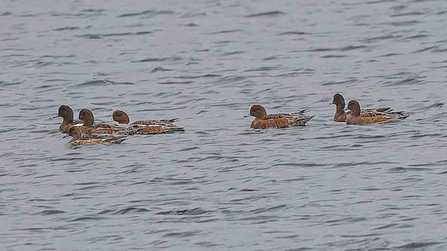
Good numbers of wigeon dropped in this month pic @MLP
Mid-month saw a flock of 13 barnacle geese arrive back after their late summer break to join the single bird that never left. The first wigeon of the Autumn was found on the 7th - four days later than in 2023 - with singles also on the 14th and 19th, three on the 20th and a dozen including a flock of seven on the 23rd. Good numbers of shoveler continued to use the Wetlands for their post-breeding moult with 96 counted on the 27th. A very tame black-necked grebe, the second record after the pair in April, was found on No 4 on the 22nd. It stayed into October and kindly moved to Lockwood for the last days of September to allow non-permit holders the chance to enjoy it.

The black-necked grebe allowed a close approach pic @Chris_Farthing
While great egret had been seen at plenty of nearby sites already this year, for some reason the reservoirs had been a no-fly zone until SD picked up the first of the year heading west on the 22nd. As so often happens after such an inexplicable absence, a second bird flew through two days later. Following last month’s record and an influx into London, another cattle egret was photographed on the 3rd.
A red kite was seen on the 10th and two buzzards on the 15th with another on the 21st. Hobby made regular, if again usually brief, appearances with records on seven days - one less than last year - with the last sighting on the 21st while peregrines were semi-resident on the pylons on the south side. An evening visit on the 28th revealed that at least one,and probably two, little owls had re-appeared - just as they did last year - which raises questions again of where they spend the rest of their time.
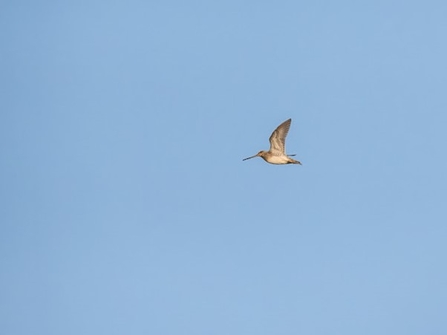
Snipe arrived back on schedule pic @Elliott81758817
Eight species of wader - the same as last year - were seen in September although unlike last year, there was nothing out-of-the-ordinary. An oystercatcher spent two days at the Wetlands on the 3rd &4th with two lapwing on Lockwood on the 6th and another on the 20th. The first common snipe of the autumn was seen on the 1st - seven days earlier than last year - with others on the 2nd, 4th, 21st, 26th and 28th.
Common sandpiper passage was strong with a peak count for the Autumn of 19 on the 2nd and still six scattered around the site on the 26th, dwindling to two by the 30th., green sandpiper were seen on the 9th & 10th with two on the 17th while greenshank were recorded on the 1st and 6th. The only redshank of the month was seen on the 21st.
The first common gull since the Spring was an early bird on the 1st. We count ourselves lucky if we see a couple of sandwich terns a year with 2024 already boasting two records. So the flock of 12 first seen going over High Maynard early on the 4th before gaining height over West Warwick was unprecedented.
Their appearance came the day after the last family of three common terns - whose colour rings showed the two juveniles had been raised on West Warwick - finally left, five days earlier than the the last young birds and accompanying adult departed last year. A flock of around 20 terns briefly over Lockwood on the 2nd where either Common or Arctic as was a single distant tern over West Warwick on the 6th.
Swifts seem to be leaving earlier with the last definite record on the last day of August, one day earlier than last year. Swallow passage was light with the peak count of 20 on both the 5th & 6th until heavy rain on the 25th saw 65 passing through.The same day saw the final sand martins but house martins remained into October with over 500 still around the Wetlands and filter beds on the 26th.
A yellow-browed warbler was recorded at the bottom of No 3 reservoir on the 22nd by an experienced observer taking part in the BTO bird race. It is only the second record for the Wetlands following the first in the Autumn of 2020 which stayed for several weeks after going missing after it was first found. It is possible the pattern is repeating itself as there was a second sighting of a Yellow-browed Warbler on the 29th near the Engine House by the Bird Enthusiasts of Colour walk.
Reed warblers, as they did last year, lingered until the end of the month. A ringing session on the 21st showed sedge warblers were still moving through with two caught (18th last date last year) while the final record for willow warbler were the 16th (18th) common whitethroat 14th (18th) and lesser whitethroat on the 22nd (19th). Spotted flycatchers were only seen on the 1st and 2nd with a late record on the 22nd.
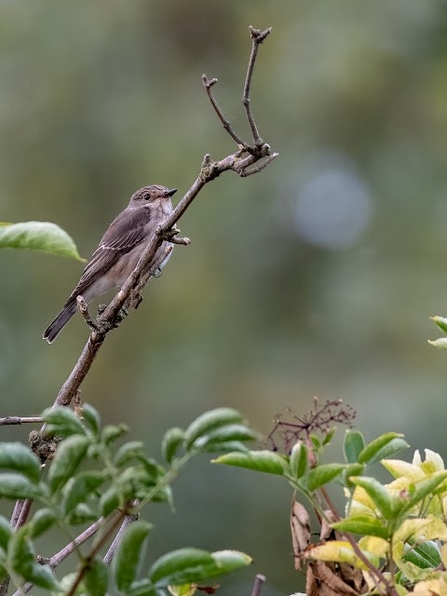
Spotted flycatchers were scarce pic @Elliott81758817
It was a much better month for whinchats compared both to August and last September when there was only one record. Birds were seen on 10 days with two on the 2nd and 13th. The first stonechat of the Autumn arrived on the 18th - two days later than last year - with three together on West Warwick by the 25th.
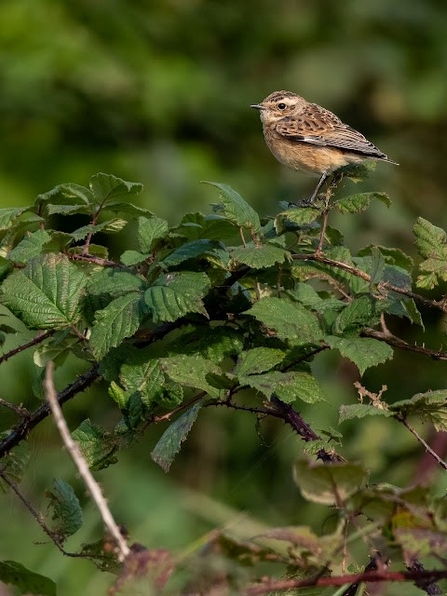
It was a good month for passage whinchat pic @Elliott81758817
Wheatear passage was also much better than in August with birds seen on at least 16 days with a strong bias towards the beginning and end of the month. Six on the 4th was the highest count and there were still two on the 30th.
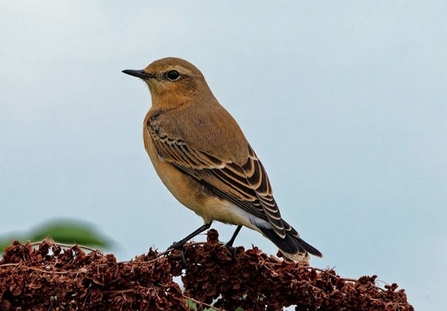
Wheatear passage continued across the month pic @sjnewton
The exceptional passage of yellow wagtail this year continued with records on at least eight days and peak counts of four on both the 7th and 25th compared to just two last year. Meadow pipits began flying over in small numbers from mid-month with 25 seen and heard on the 21st, They included an accompanying tree pipit on the 14th picked up by SD.
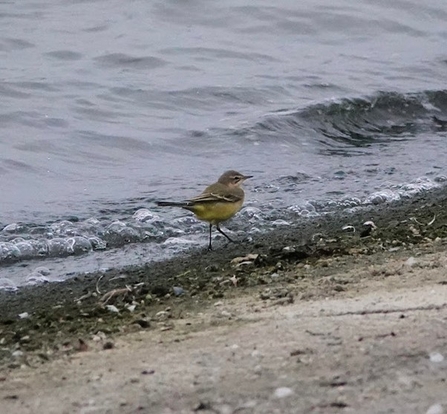
Yellow wagtails have been much more common pic